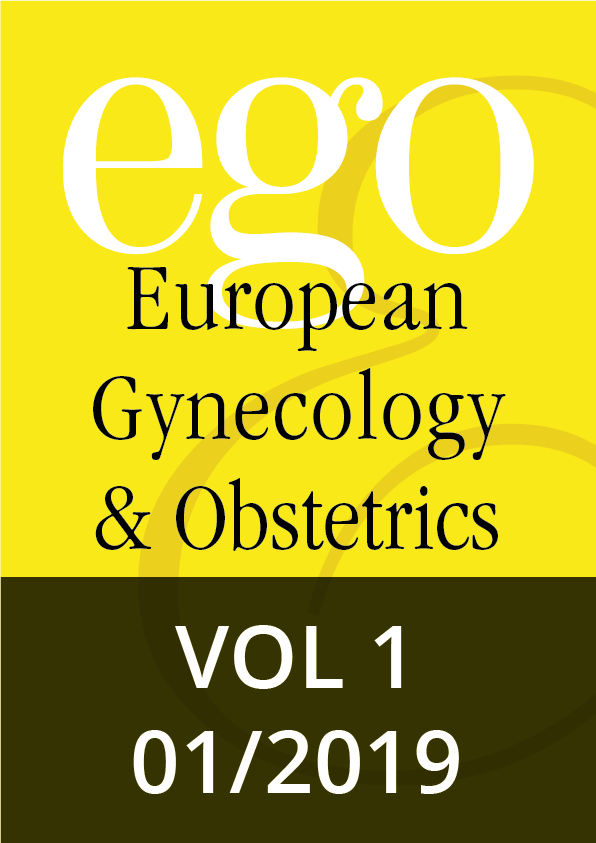In memoriam, 002–002
Editorial, 003–003 | DOI: 10.53260/ego.191011
Reviews, 005–009 | DOI: 10.53260/ego.191012
Reviews, 010–017 | DOI: 10.53260/ego.191013
Reviews, 018–023 | DOI: 10.53260/ego.191014
Case reports, 024–026 | DOI: 10.53260/ego.191015
Case reports, 027–028 | DOI: 10.53260/ego.191016
Original articles, 029–033 | DOI: 10.53260/ego.191017
Original articles, 034–038 | DOI: 10.53260/ego.191018
Original articles, 039–042 | DOI: 10.53260/ego.191019
Original articles, 043–047 | DOI: 10.53260/ego.1910110
Original articles, 048–050 | DOI: 10.53260/ego.1910111
Original articles, 051–054 | DOI: 10.53260/ego.1910112
Original articles, 055–060 | DOI: 10.53260/ego.1910113
Bone density and body weight is associated with MTHFR677 polymorphism in girls with anorexia nervosa
Original articles, 061–064 | DOI: 10.53260/ego.1910114
Pregnancy outcome in women with polycystic ovary syndrome: a retrospective study on the influence of clomiphene stimulation versus laparoscopic ovarian drilling after clomiphene resistance
Abstract
Purpose: We aimed to retrospectively evaluate adverse outcomes of singleton pregnancies in women with polycystic ovary syndrome (PCOS) after clomiphene (CC) stimulation versus laparoscopic ovarian drilling (LOD) after CC resistance.
Methods: This retrospective study included 67 PCOS women who had conceived naturally within 12 months after LOD and 67 matched pregnant women who had conceived after CC stimulation. In addition, 134 matched non-PCOS controls who had conceived naturally were included.
Results: The controls had higher rates of pregnancy complications than the PCOS cases. Neither CC responsiveness nor CC resistance was associated with any higher risk of pregnancy complications such as gestational diabetes mellitus (46.3% vs. 38.3%, p=0.485), pregnancy-induced hypertension (23.9% vs. 28.4%, p=0.694), preeclampsia/HELLP syndrome (10.4% vs. 16.4%, p=0.448), or preterm delivery (20.9% vs. 14.9%, p=0.500).
Conclusion: Singleton pregnancies in PCOS women do not carry higher risks after LOD for CC resistance compared with pregnancies after successful CC stimulation.
Keywords: clomiphene citrate., ovarian drilling, polycystic ovary syndrome, Pregnancy complications
Citation: Pregnancy outcome in women with polycystic ovary syndrome: a retrospective study on the influence of clomiphene stimulation versus laparoscopic ovarian drilling after clomiphene resistance, EGO European Gynecology and Obstetrics (2019); 2019/01:061–064 doi: 10.53260/ego.1910114
Published: September 2, 2019
ISSUE 2019/01

In memoriam, 002–002
Editorial, 003–003 | DOI: 10.53260/ego.191011
Reviews, 005–009 | DOI: 10.53260/ego.191012
Reviews, 010–017 | DOI: 10.53260/ego.191013
Reviews, 018–023 | DOI: 10.53260/ego.191014
Case reports, 024–026 | DOI: 10.53260/ego.191015
Case reports, 027–028 | DOI: 10.53260/ego.191016
Original articles, 029–033 | DOI: 10.53260/ego.191017
Original articles, 034–038 | DOI: 10.53260/ego.191018
Original articles, 039–042 | DOI: 10.53260/ego.191019
Original articles, 043–047 | DOI: 10.53260/ego.1910110
Original articles, 048–050 | DOI: 10.53260/ego.1910111
Original articles, 051–054 | DOI: 10.53260/ego.1910112
Original articles, 055–060 | DOI: 10.53260/ego.1910113
Bone density and body weight is associated with MTHFR677 polymorphism in girls with anorexia nervosa
Original articles, 061–064 | DOI: 10.53260/ego.1910114
